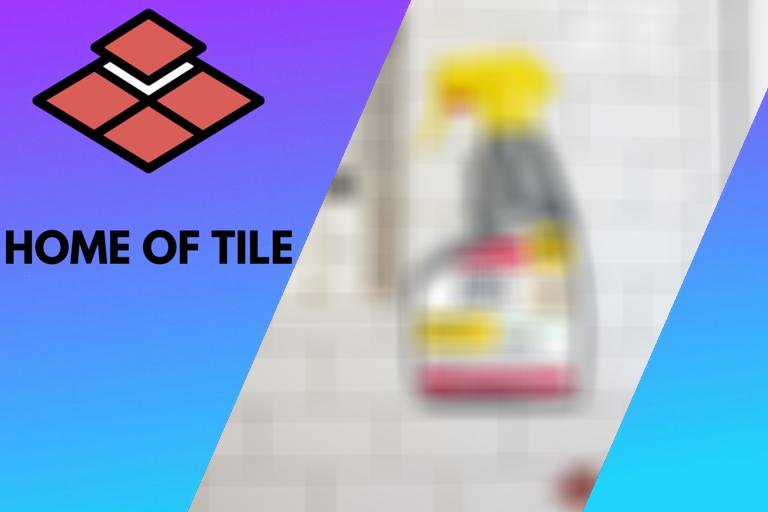When To Seal Grout. What the pros say
New tiles can make any room look better. The options are endless, and there’s grout available in different colors to compliment your tiles. If you want to keep your grout clean and looking new, you’ll have to seal it and regularly clean and maintain the area.
The best time to seal grout is around 72 hours after you’ve installed your new tiles. This time frame gives it enough time to dry and cure. If there are any cracks or chips in your grout lines, you should touch them up and wait another 72 hours.

This article highlights when and how you should seal grout. I also discuss the different types of grout sealers and list a grout option that lets you skip sealing entirely!
Contents
When and How To Seal Grout
If you’ve installed new tiles or redid your grout lines, it’s best to wait 2 to 3 days before sealing it. You should also clean and reseal old grout from time to time.
Tile grout doesn’t stay put forever. There are many types, and they all perform differently. A protective layer will keep your grout clean for longer and help it last better, especially in high-traffic areas.
You should reseal your grout lines once or twice a year. Light grout will get dirty easier and require more frequent sealing.
Follow these steps to seal your grout perfectly:
● Step 1: Prepare the Surface
Working with old or new grout involves different approaches.
- Old grout: If you want to seal old grout, prepare your grout lines by thoroughly cleaning them. You can use a toothbrush to scrub the grime away and clean the grout with a soft cloth and warm water. Leave the grout to dry for at least 2 hours. Any water soaked up will evaporate. You can retouch your grout lines if you notice any chips or cracks.
- New grout: Any new grout applied should be left to dry for at least 48 hours. For certainty, wait 72 hours before applying a grout sealer. You can keep the new grout clean by wearing shoe covers and keeping the area unavailable while you wait for the time to pass.
After you have prepared your grout lines, you can move to the next step.
● Step 2: Apply the First Sealant Layer
Apply your chosen grout sealer from left to right. You should work slowly and deliberately to cover every inch of grout. Working in small areas is best and will ensure no spots are overlooked.
Depending on the sealer you choose, keep a soft cloth nearby to wipe excess sealer from your tiles. Most grout sealers shouldn’t dry on tiles. If it does, you’ll be left with a residue that’s hard to remove.
Grout sealers dry differently, but I suggest waiting at least 24 hours before you move to the next step.
● Step 3: Apply the Second Sealer Layer
After the first layer of sealant has dried, you can apply another. Use the same method as with the initial coat. You’ll have to apply 2 or 3 layers of grout sealer to get the best protection.
Wait a minimum of 24 hours before each coat to ensure the sealer has dried properly. Always make sure you test the area before applying another layer.
● Step 4: Test Your Grout Lines
You should test your grout after the second coat of sealer has dried. Apply clean water on different grout lines. If the water beads up and forms droplets, your sealer works as it should. If not, you’ll have to apply another layer and repeat the test until your grout is protected.
Perform this same test to determine when you need to reseal your grout lines.
The Two Different Types of Grout Sealer
There are two main types of grout sealers and many brands with unique formulas to choose from. Each type has a specific purpose. Here’s what you need to know!
● Penetrating Grout Sealers
Penetrating sealers are the most common and consist of a water or mineral spirit base. It’s excellent at preventing long-term damage by water, oil, and mildew. This formula penetrates the grout structure and fills any gaps present to keep moisture out.
You can find penetrating grout sealers in different colors. Some can lessen grout discoloration, while others only offer protection. Penetrating sealers work best for damp areas like bathrooms or kitchens.
● Surface Grout Sealers
Surface sealers are also known as non-penetrating or membrane-forming grout sealers. These don’t penetrate the grout structure but create a coating on the surface. It offers basic protection against moderate dirt and water exposure.
You can use a surface grout sealer in most areas, but avoid applying it in bathrooms. These sealers prevent evaporation which could lead to mold growth when grout is regularly exposed to water or dampness.
Surface grout sealers offer protection and give grout an extra shine! I suggest using it with unglazed tiles.
When You Shouldn’t Seal Grout
You should always seal your grout lines, with epoxy grout as an exception. Epoxy grout is water resistant, and you don’t need to add a grout sealer for it to last forever! It’s made from a resin and filler mixture that helps it shed water naturally.
Epoxy grout doesn’t stain easily and is durable. If you regularly clean with harsh products or need better grout for high-traffic areas, this might be your answer!
There are, however, some downsides to using epoxy grout. Many homeowners feel it looks like plastic, and it can be challenging to apply.
Conclusion
Sealing your grout lines is an investment worth every penny. It’s cheaper than replacing grout!
Over time, cementitious grout discolors and becomes a breeding place for bacteria and mold if you don’t seal it. Save yourself the trouble of replacing grout and likely damaging your tiles by ensuring it has enough protection against water and oil exposure.
If you want to skip this extra work, you can opt for epoxy grout. Just check with your contractor if this grout will work best for where you want to use it. Choosing the right tile grout can make all the difference.








